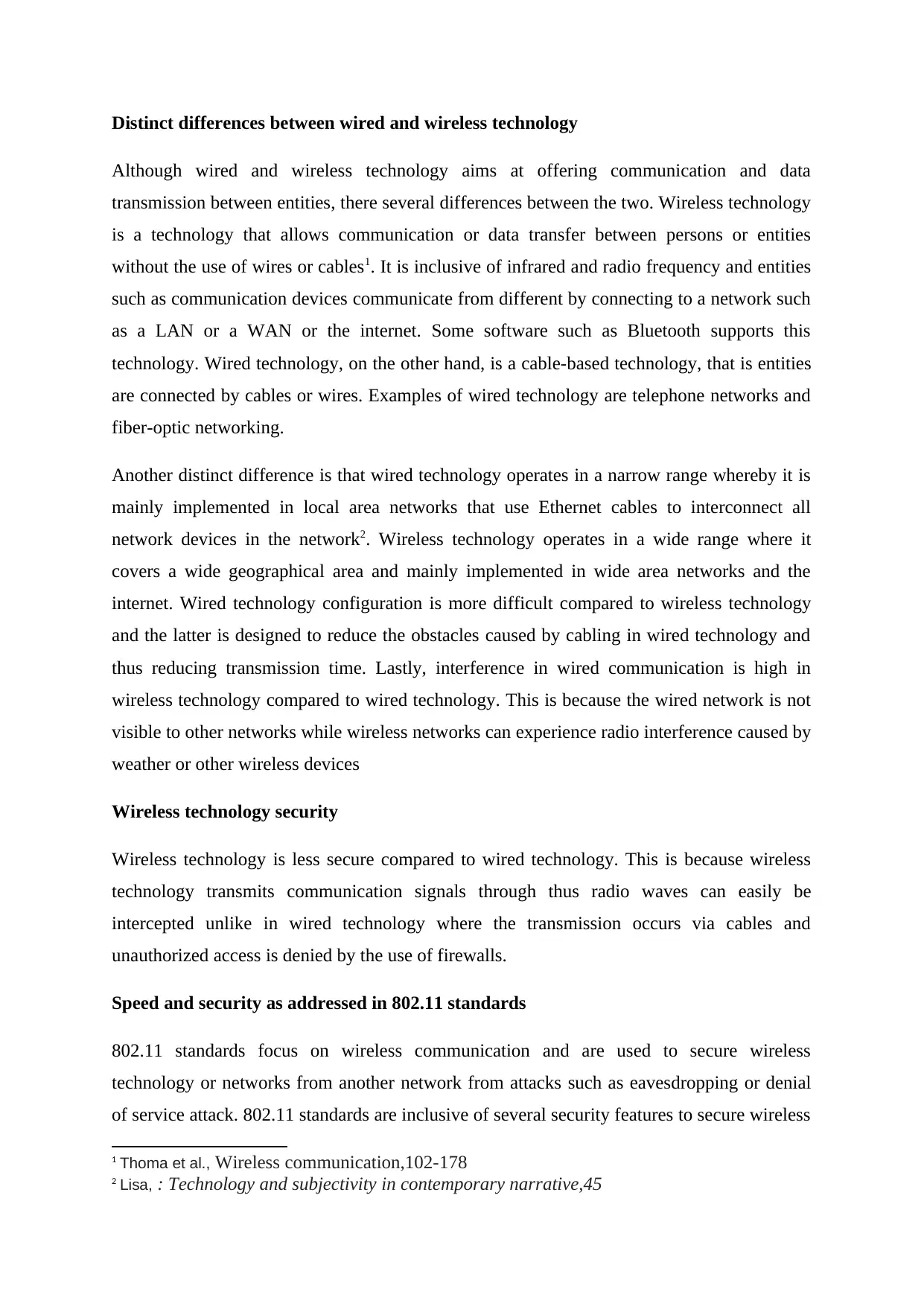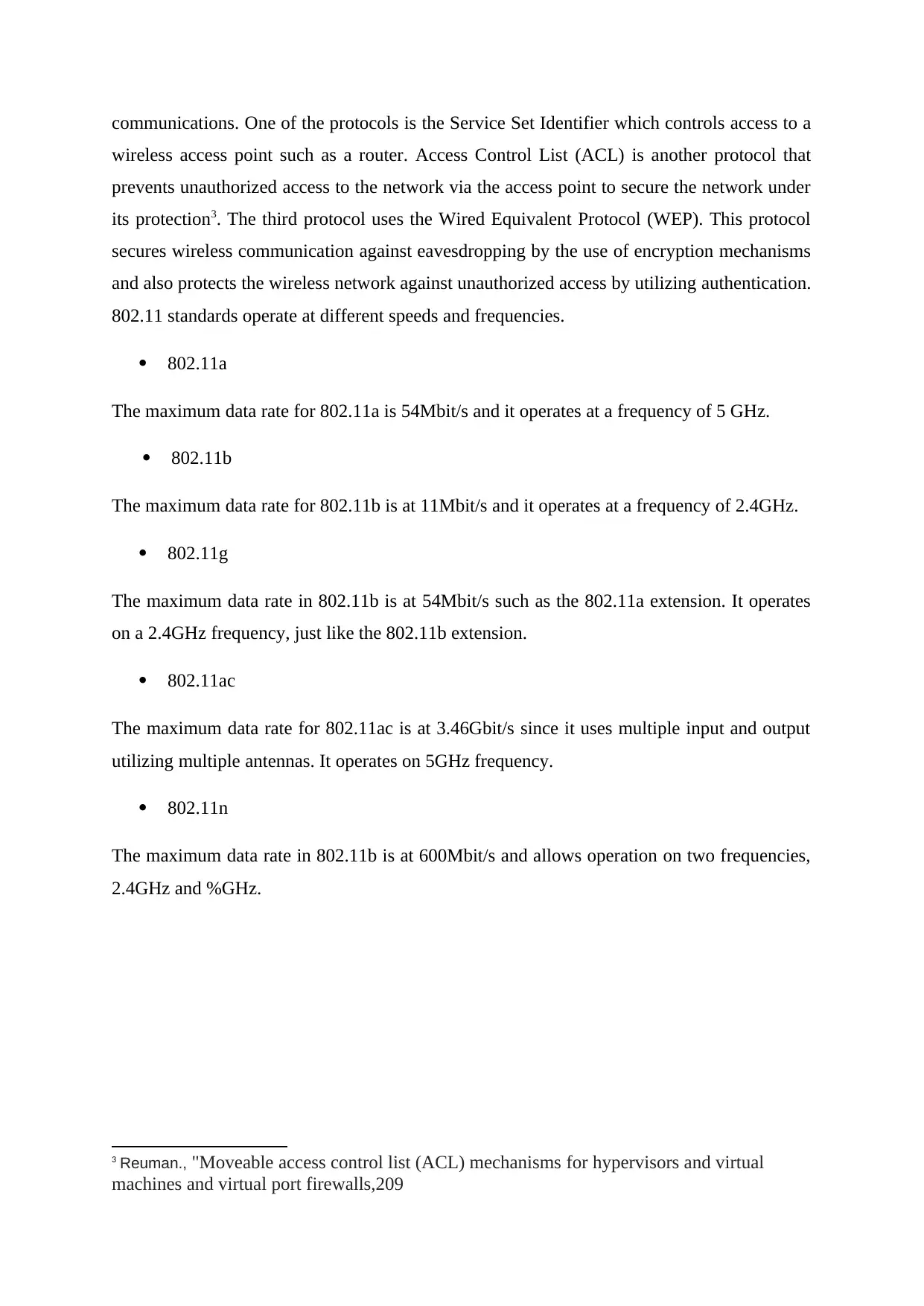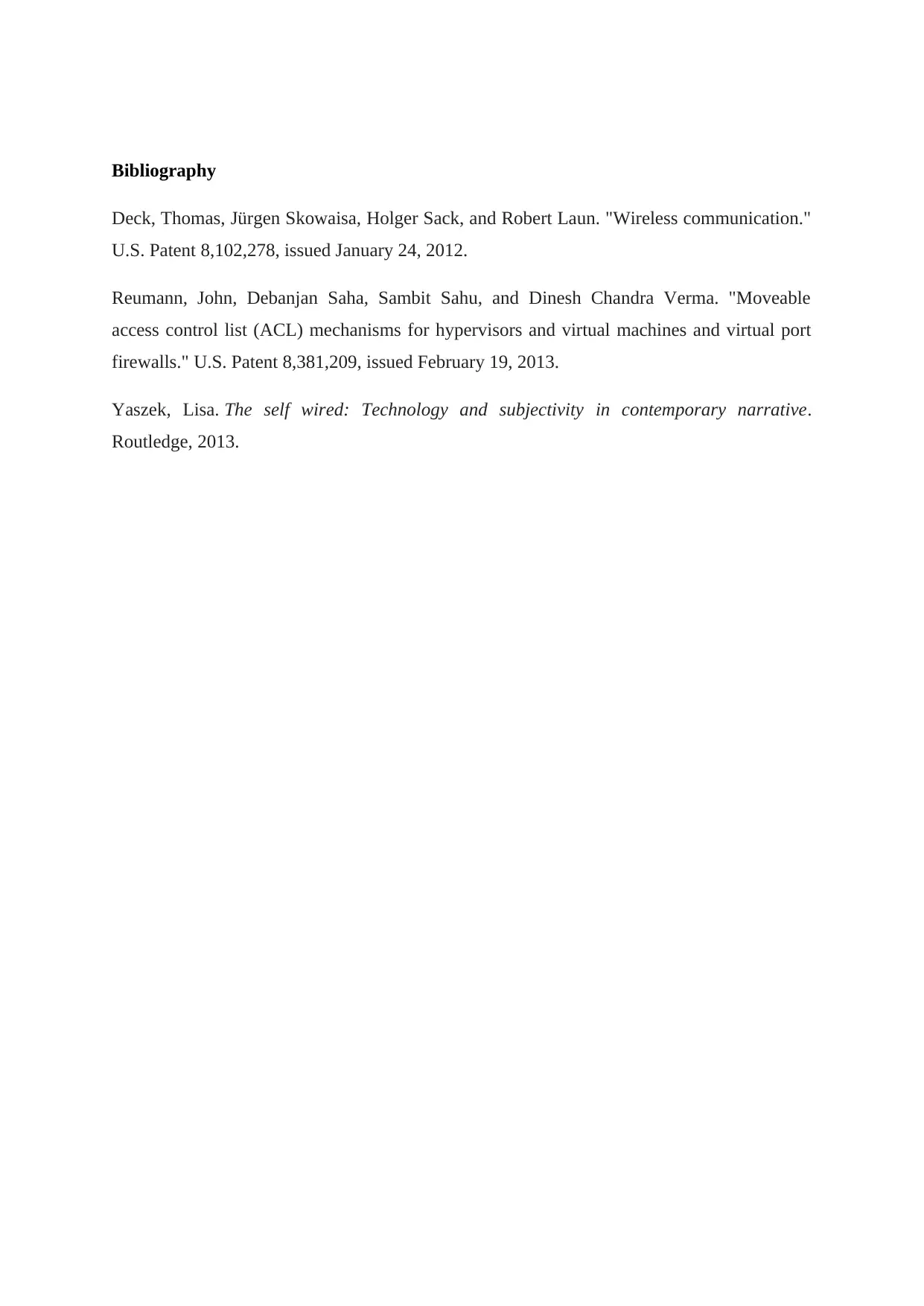Wired and Wireless Technology: Differences, Security and Standards
VerifiedAdded on 2022/09/26
|3
|667
|45
Report
AI Summary
This report provides a comparative analysis of wired and wireless technologies, highlighting their key differences in terms of data transmission, range, and configuration. It explores the security aspects of both, emphasizing the vulnerabilities of wireless technology and the measures taken to mitigate them. The report delves into the 802.11 standards, detailing the various protocols like Service Set Identifier (SSID), Access Control List (ACL), and Wired Equivalent Privacy (WEP) used to secure wireless communications against threats such as eavesdropping and unauthorized access. The report also examines the different 802.11 standards (a, b, g, ac, and n), their maximum data rates, and the frequencies at which they operate, offering a comprehensive overview of wireless technology and its evolution.
1 out of 3










![[object Object]](/_next/static/media/star-bottom.7253800d.svg)